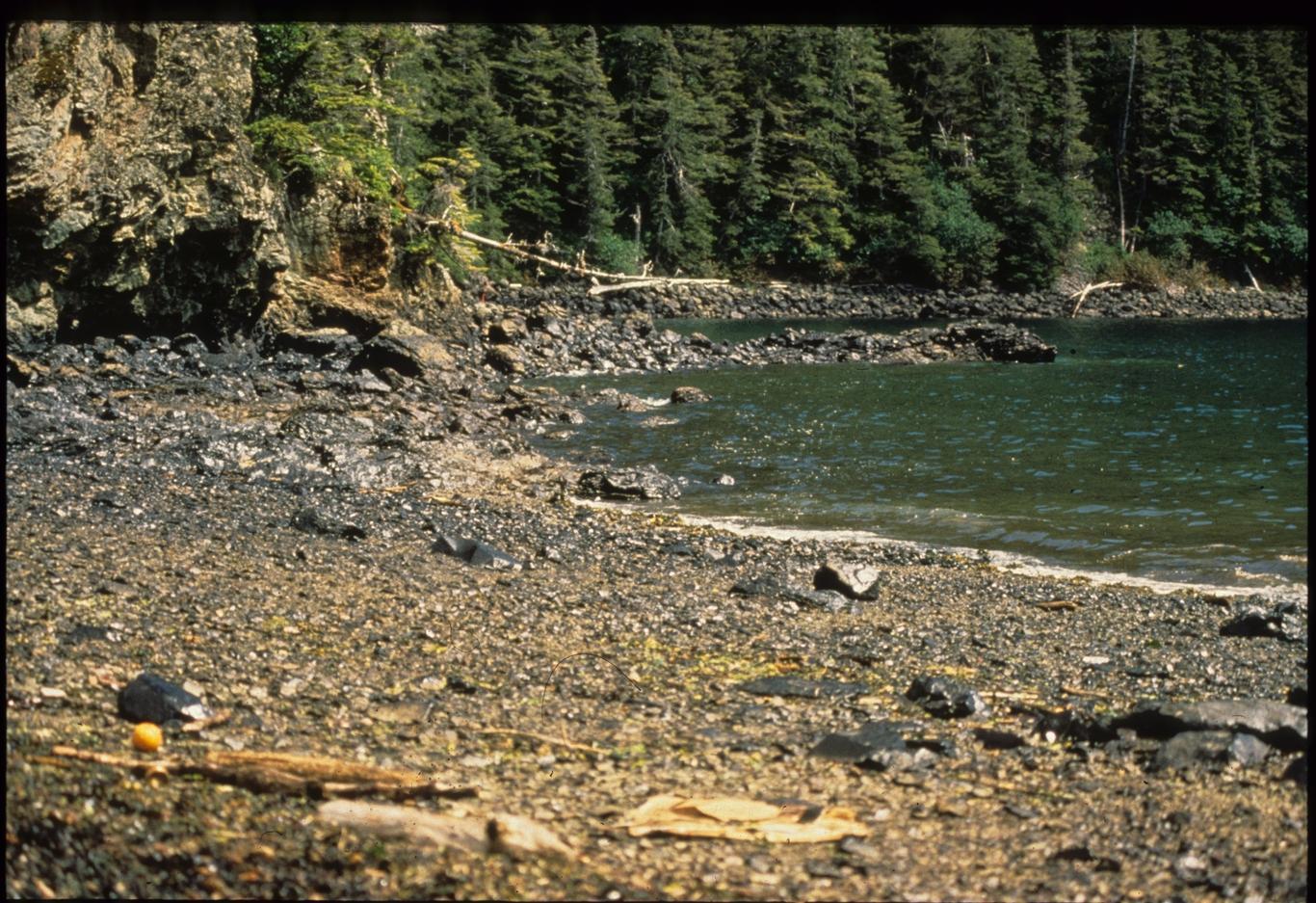4.1 Chapter Overview and Learning Objectives
4.1.1 Learning Objectives
After reading this chapter, students will be able to do the following:
- Explain how theorists claim different aspects of society lead to crime.
- Identify criminogenic factors within sociological theories of crime.
- Apply sociological theories to marginalized groups in the United States.
- Compare the labeling of subcultures as criminal compared to the dominant culture.
- Analyze the influence of society and community on criminal outcomes.
- Explore the influence of sociological theories on policy.
4.1.2 True Crime Stories: The Exxon Valdez

Figure 4.1 The remains from the Exxon Valdez Oil Spill after the 2nd treatment by oil spill workers in Alaska.
On March 24, 1989, the tanker Exxon Valdez grounded on the Bligh Reef in Prince William Sound, Alaska (figure 4.1). Approximately 11 million gallons of oil spilled into the water that surrounded the area. The oil killed and injured wildlife including sea otters, harbor seals, bald eagles, orcas, and more. The story in the media focused on the oil spill and the immense damage it caused to the environment. After the disaster, it was reported that no human lives were lost from the spill but four deaths were associated with the cleanup.
For most, that was the end of the story, but it was just the beginning of the issues the area would face in the decades to come. This event was devastating to the area. It significantly damaged the rich and productive waters of the Prince William Sound and it also created economic uncertainty, community conflict, loss of social capital, collective trauma, and stress. The financial hardships directly related to the loss of this major industry changed the course of the lives of those who lived in the Sound.
“The Valdez Crud” was a term used because such a large number of workers became ill with respiratory illnesses that were first thought to be just colds or even the flu. The crude oil they were cleaning up and the solvents used to do the cleaning both contained hazardous chemicals that cause rashes, respiratory ailments, damage to the central nervous system, kidneys, and liver (Stranahan, 2003). ExxonMobil has done a masterful job of hiding this aspect of the oil spill and their responsibility, according to those now suffering the consequences (Stranahan, 2003).
In addition to the economic and health crisis, fishing was the identity and lifeblood of the area and residents were no longer able to fish. As a result, possibly every kind of social stress was experienced by the community. Alcoholism, suicidal ideation, family violence, divorce, and all of the related financial failures increased after the spill. Even a local mayor, Robert Van Brocklin, committed suicide years after the spill and mentioned Exxon in his suicide note.
What if the spill never happened? How would these individuals’ lives be different? How many lives ended that would have been happy without the spill?
These questions get at the core of sociological theory and how societal factors influence our attitudes and behaviors. The Prince William Sound area was one of the top 10 seafood ports in the United States, but because of this unexpected change and the lack of resources given to the community after the spill, the area and the people who lived there suffered. It is reasonable to believe their lives were put on a different path than they would have experienced had the spill never occurred.
Such a negative influence could be similar to the crack cocaine epidemic. As a result of an influx of this drug and the policy that surrounded it, mass incarceration of the Black and African American population sky-rocketed (even though they were not the largest population using crack cocaine in the U.S.). Let’s consider the same type of questions as we did with the spill: What if crack cocaine never existed? What if discriminatory drug policies were never passed? Would the inner city African American population be better off or would the U.S. have created another “spill” to help destroy the hopes and resources of the community?
In the end, after wiping out the fishing industry of the community, Exxon spent nearly two decades appealing the initial $5 billion court order. The U.S. Supreme Court struck the order down, arguing that punitive damages should not exceed the amount of the actual damage inflicted, which was calculated at $287 million. After waiting over 20 years and believing they would receive about $2.5 million, some of the residents only received $180,000 for the damage that was done to them. This was a victory for the industry and also an example of how imbalanced the court system is when it comes to power and resources.
4.1.3 Licenses and Attributions for Chapter Overview and Learning Objectives
“Chapter Overview and Learning Objectives” by Curt Sobolewski is licensed under CC BY 4.0.
Figure 4.1 Photo of The remains from the Exxon Valdez Oil Spill after the 2nd treatment by oil spill workers in Alaska by Alaska Resources Library and Information Services, CC BY-SA 4.0, via Wikimedia Commons.
